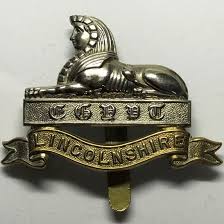Personal Details
Born: 17 December 1876 in Whitchurch, Shropshire and baptised 17 January 1877 in the Wesleyan Methodist Chapel, Whitchurch.
Family: He was the fourth of five children born to John Watkin, a railway guard, and his wife Ann. No marriage can be traced for Arthur.
Residence: Arthur and his family lived in Whitchurch until at least 1879 when his younger sister was born. From 1881 to at least 1920 he lived at 7 Castle View, Stafford, Staffordshire. In 1939 he was living at 69 Doxey, Stafford with his sister and her husband.
Employment: In 1891 he was a grocer’s assistant; in 1911 he was a labourer and in 1939 he was a general labourer in a furnishing department.
Died: In 1944 in Stoke-on-Trent, aged 67.
Military Details
Regiment: Lincolnshire Regiment (previously North Staffordshire Regiment)
Rank: Private
Service Number: 3/26931 (previously 28411)
Date of Enlistment: 14 December 1915
Date of Discharge: 7 April 1919
Reason for Discharge: Demobilisation
Arthur was awarded the Campaign Medals (British War Medal and Victory Medal)

The British War Medal (also known as 'Squeak') was a silver or bronze medal awarded to officers and men of the British and Imperial Forces who either entered a theatre of war or entered service overseas between 5th August 1914 and 11th November 1918 inclusive. This was later extended to services in Russia, Siberia and some other areas in 1919 and 1920. Approximately 6.5 million British War Medals were issued. Approximately 6.4 million of these were the silver versions of this medal. Around 110,000 of a bronze version were issued mainly to Chinese, Maltese and Indian Labour Corps. The front (obv or obverse) of the medal depicts the head of George V. The recipient's service number, rank, name and unit was impressed on the rim.
The Allied Victory Medal (also known as 'Wilfred') was issued by each of the allies. It was decided that each of the allies should each issue their own bronze victory medal with a similar design, similar equivalent wording and identical ribbon. The British medal was designed by W. McMillan. The front depicts a winged classical figure representing victory. Approximately 5.7 million victory medals were issued. Interestingly, eligibility for this medal was more restrictive and not everyone who received the British War Medal ('Squeak') also received the Victory Medal ('Wilfred'). However, in general, all recipients of 'Wilfred' also received 'Squeak' and all recipients of The 1914 Star or The 1914/1915 Star (also known as 'Pip') also received both 'Squeak' and 'Wilfred'. The recipient's service number, rank, name and unit was impressed on the rim.

